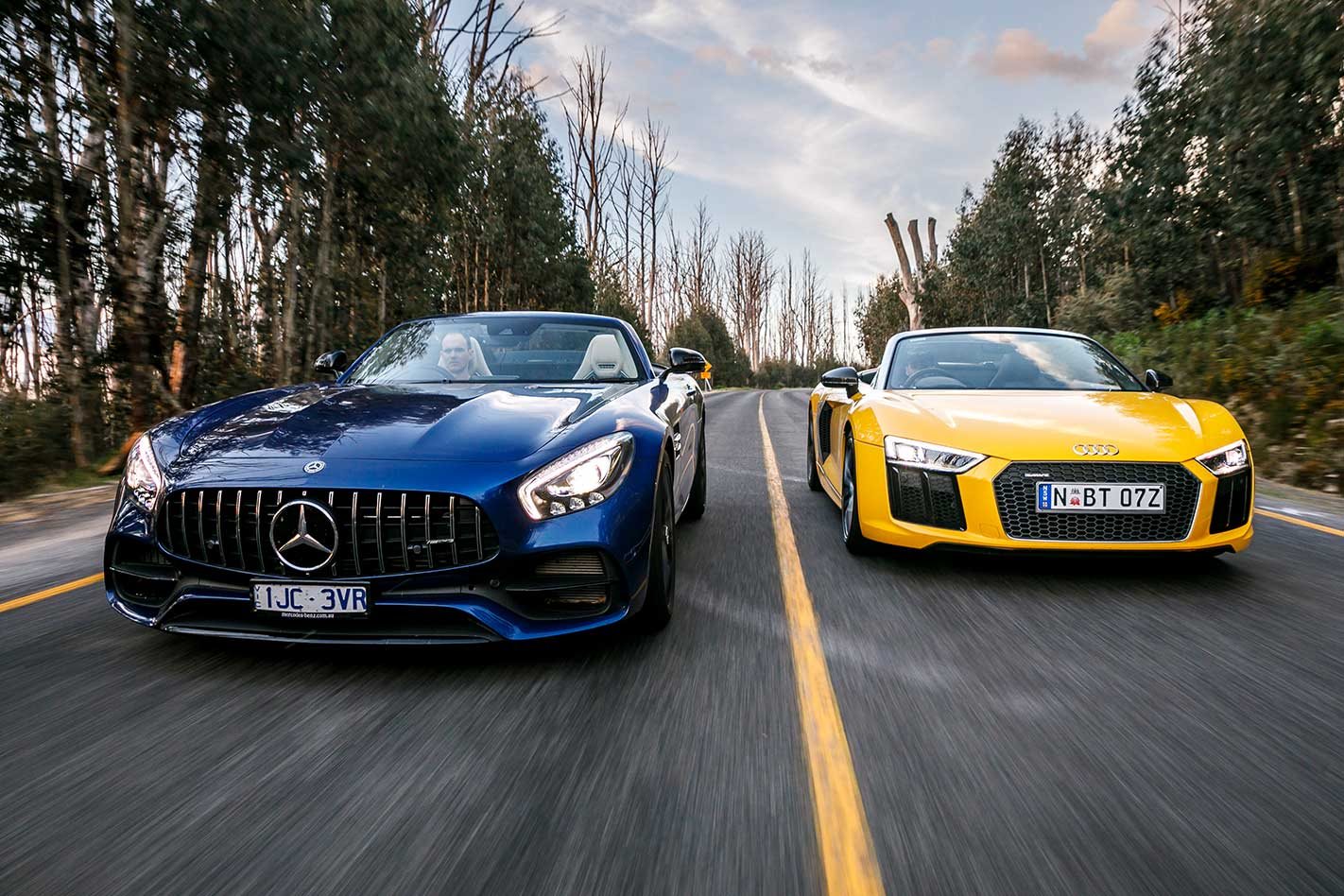We live in a sunburnt country, which neatly sums up why convertibles aren’t the smartest mode of transport during an Aussie summer.
Germany loves them, as does the UK, but then rarely, if ever, do these countries experience the 39.5°C currently displayed on the R8 Spyder’s instrument panel. As such, its roof, and that of the Mercedes-AMG GT Roadster, will be staying firmly up, for now at least, lest photographer Jacobs and I discover what it feels like to be a sausage at Bunnings on a typical weekend.
The Audi R8 is on its way out for good
Drop-tops aren’t MOTOR’s traditional fare. Serious drivers would always choose a coupe, as conventional wisdom suggests the vanity project of removing a car’s roof – and let’s face it, convertibles are all about vanity – does nothing but ruin its performance by adding weight and reducing rigidity to the detriment of acceleration, cornering, braking and ride.
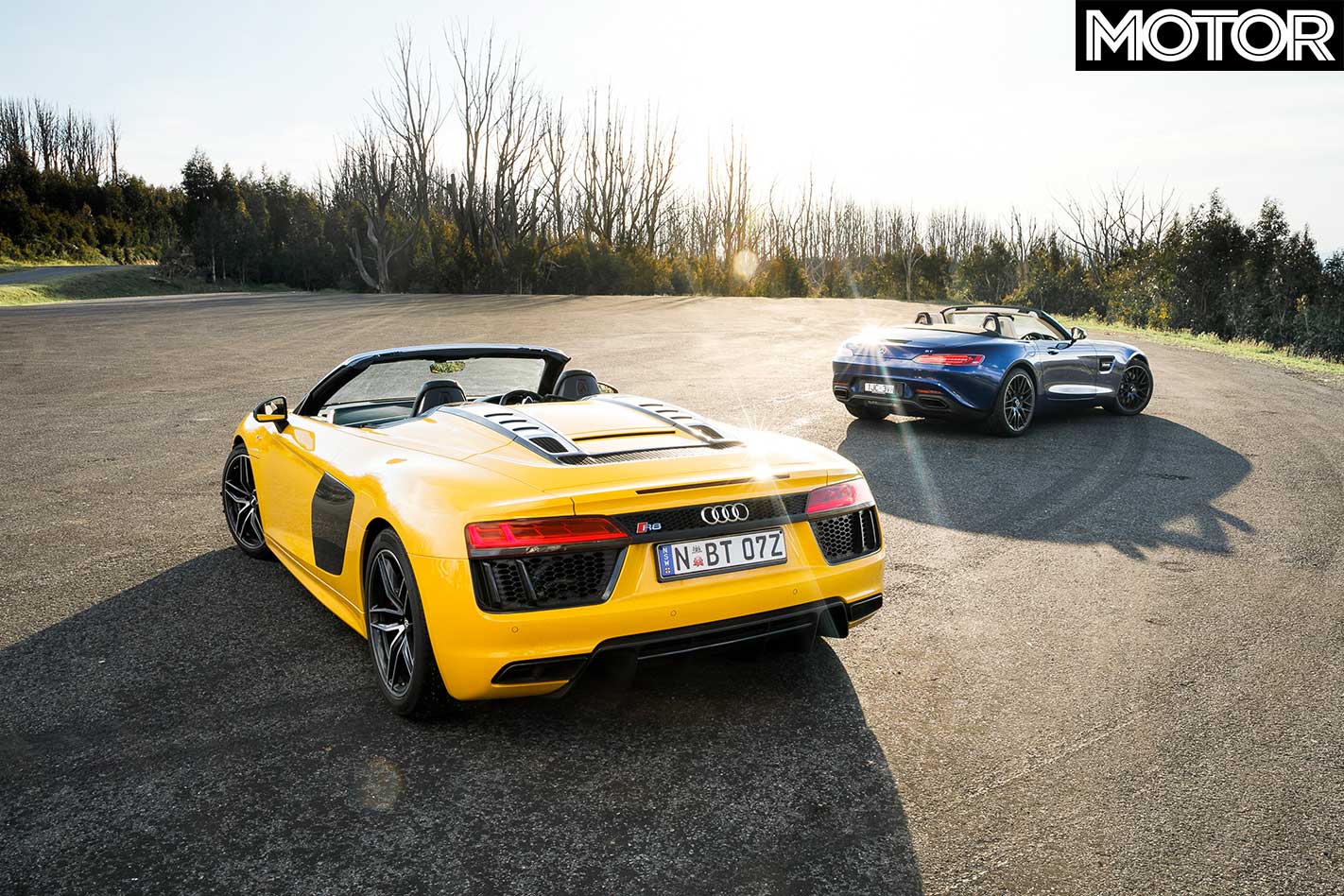
The R8 V10 Spyder and AMG GT Roadster might have been conceived with similar aims, but their respective executions couldn’t be more different.
The Audi has the cab-forward silhouette and powerboat-like flat rear deck only a mid-engined layout can provide, and it’s powered by a glorious naturally aspirated 5.2-litre V10 driving all four wheels through a seven-speed dual-clutch gearbox.
The Mercedes is also essentially mid-engined, but locating its 4.0-litre twin-turbo V8 entirely behind the front axle pushes the driver back over the rear wheels for classic sports GT proportions. Drive goes to the rear wheels only via a seven-speed dual-clutch transaxle; gearbox configuration being one of the few similarities between the two cars.
Both these cars represent the entry-level models in their respective ranges, as ridiculous as that notion is at this price point. We’re beginning to enter “if you have to ask…” territory here, but for reference the Audi starts at $388,500, while the Mercedes begins at $283,711.
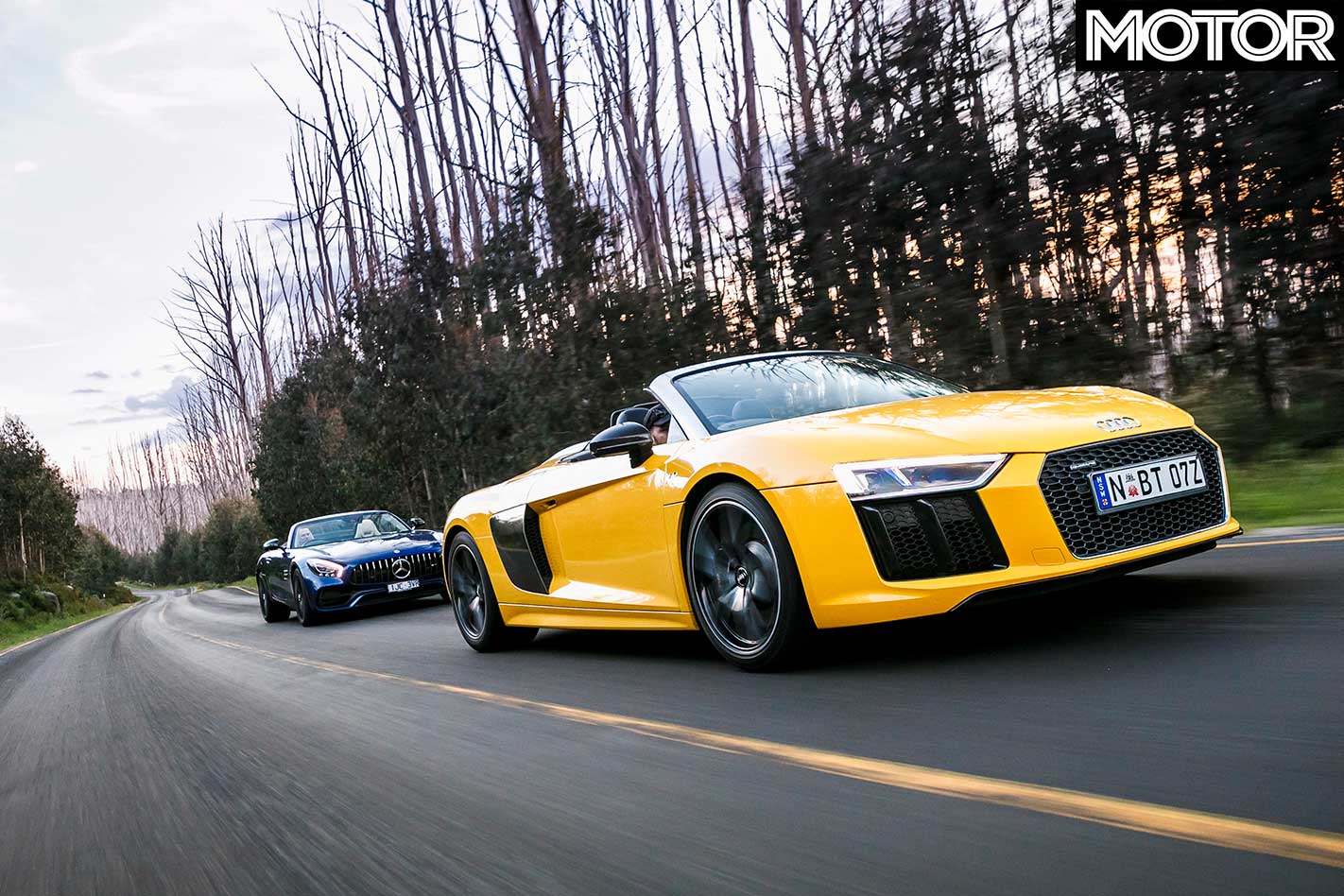
If you’re wondering why we didn’t use the $338,711 GT C Roadster, which has more power and choice chassis bits from the hardcore GT R, the answer is we tried, but a customer wanted to drive the GT C we had booked so Mercedes kindly organised a GT Roadster at short notice to take its place.
Personally, that suits me just fine, as to my eyes the colour combo on this particular example is just about perfect, the blue-over-black exterior contrasting beautifully with the light beige interior. It’ll be tricky to keep clean, but it makes the cabin look and feel special enough to forget the annoyingly placed gear selector (at the very rear of the centre console), unintuitive infotainment system and very firm AMG Performance seats, which thankfully are optional.
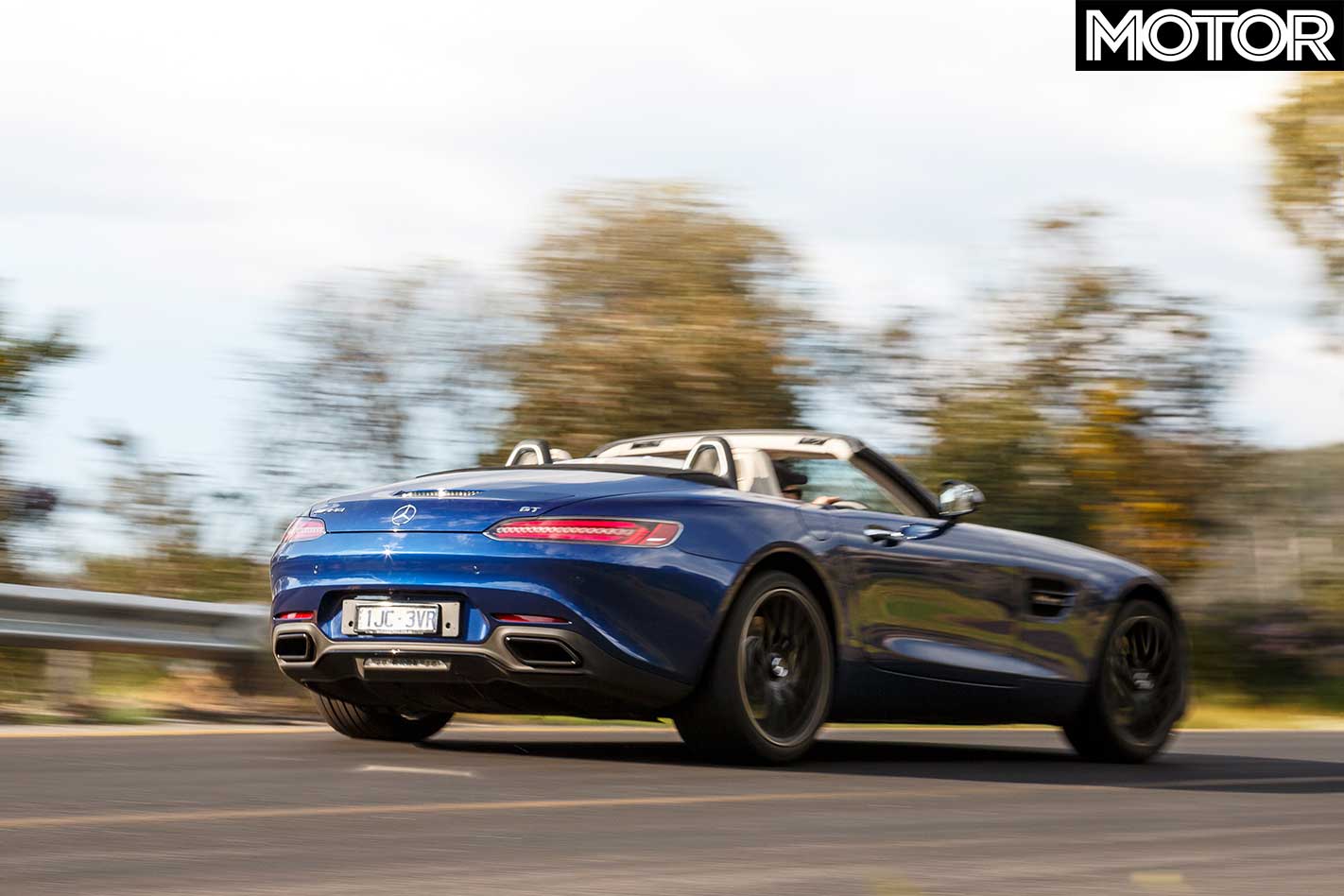
The digital instruments are clear and improve vision by deleting the need for a central screen, but navigating them seems to divert more attention away from the road than the traditional dash-mounted solution. Perhaps we just need more familiarity.
Another win for the ‘regular’ R8 V10 over its more expensive sibling is the fitment of adaptive dampers. The Plus’s passive setup relishes relaying every road imperfection, but locked in Comfort the Spyder displays surprising compliance for something so focused.
Its credentials as an everyday supercar are enhanced further by the slickness of its dual-clutch ’box, which shuffles through its seven ratios unobtrusively to keep the V10 to a muted hum. Vision is a challenge with the roof up, but otherwise the R8 is no more difficult to drive than a TT.
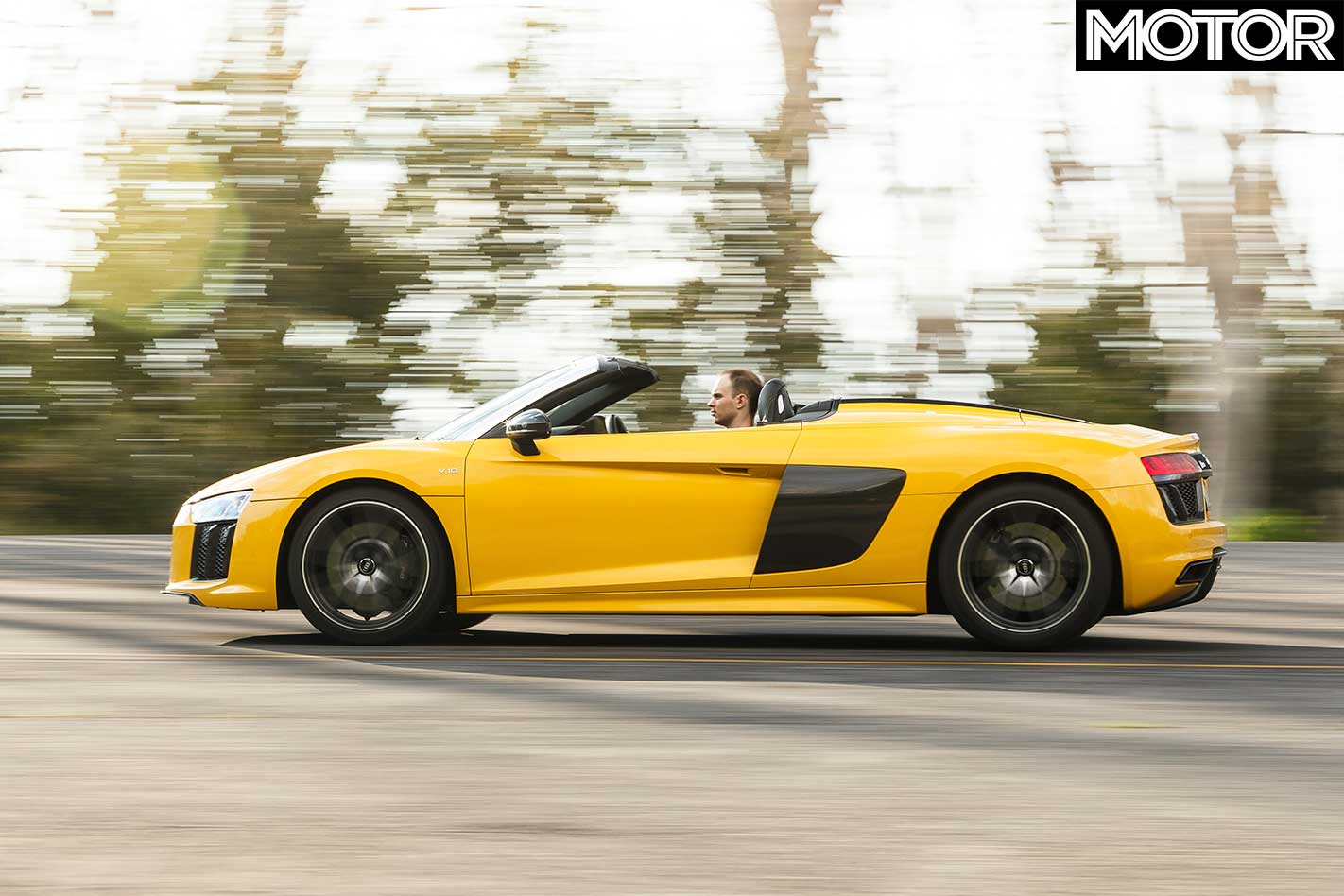
The lack of suspension adjustability also hurts the GT Roadster when you start to delve into its performance reserves. A lack of control becomes evident the harder you push, the rear-end wandering under heavy braking and also struggling to soak up mid-corner bumps, a trait inherited from the SLS, the platform of which provided the basis for the AMG GT.
From a driver’s perspective, the Ride Control adaptive suspension is $3250 well spent. It’s also questionable as to whether this base Roadster has benefited from the steering and suspension upgrades applied to the facelifted Coupes as it retains the super-sharp off-centre steering response of the original GTs.
Now some context: this all happens towards the outer end of the dynamic envelope, where few Roadster owners are likely to venture.
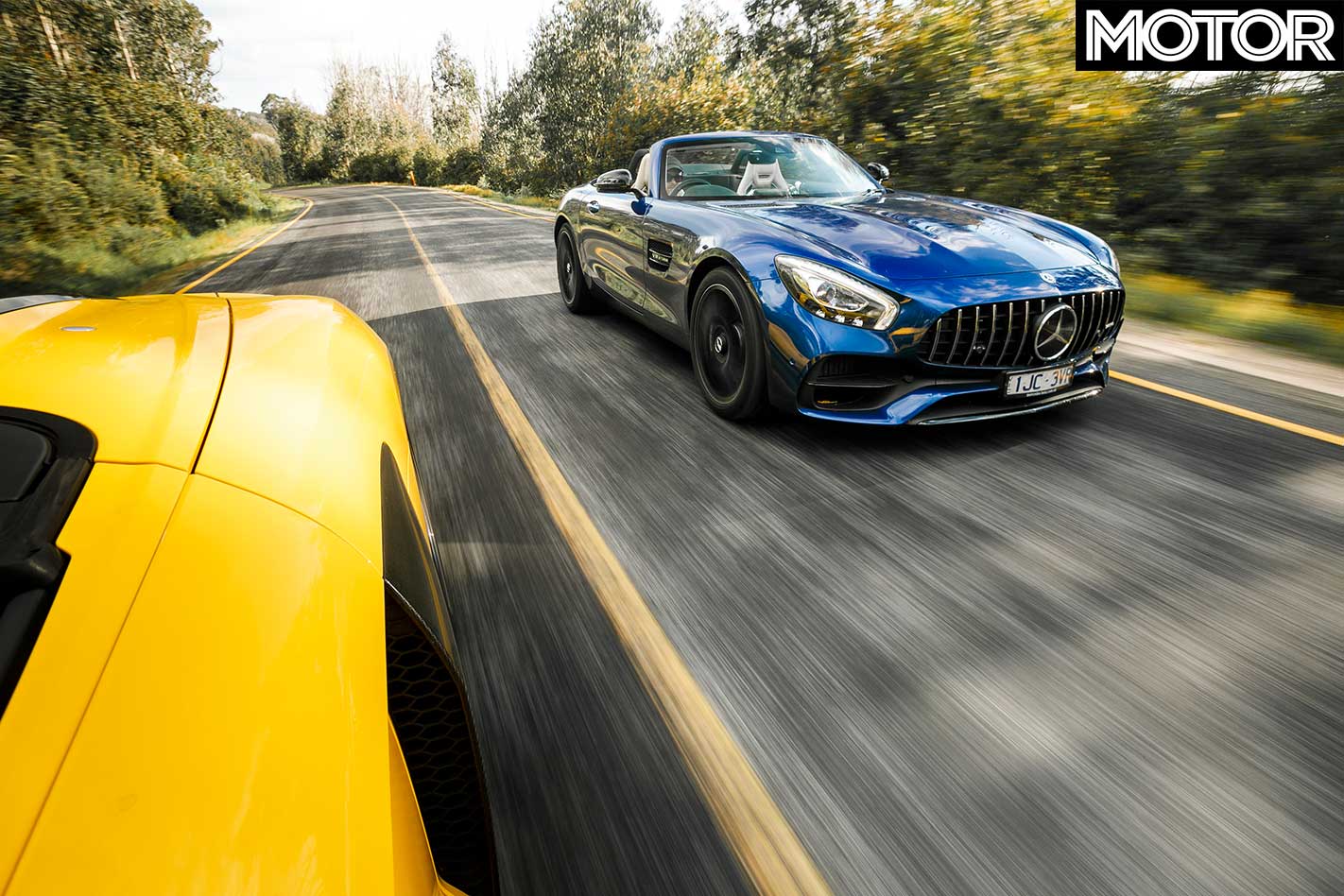
It also sounds ridiculous in the best possible sense, its brutal bent-eight bark accompanied by so many cracks, pops and bangs it’s like being on the frontline of the Battle of the Bulge.
The dual-clutch responds better than the equivalent seven-speed MCT found in the C63 et al, though still does its best work left in Sport Plus as manual requests aren’t always answered as promptly as you might like.
In contrast, the Audi’s similar seven-speed dual-clutch responds almost telepathically, the gearchange completed virtually before the paddle reaches its end stop, and it’s connected to one of the finest road car engines there’s ever been.
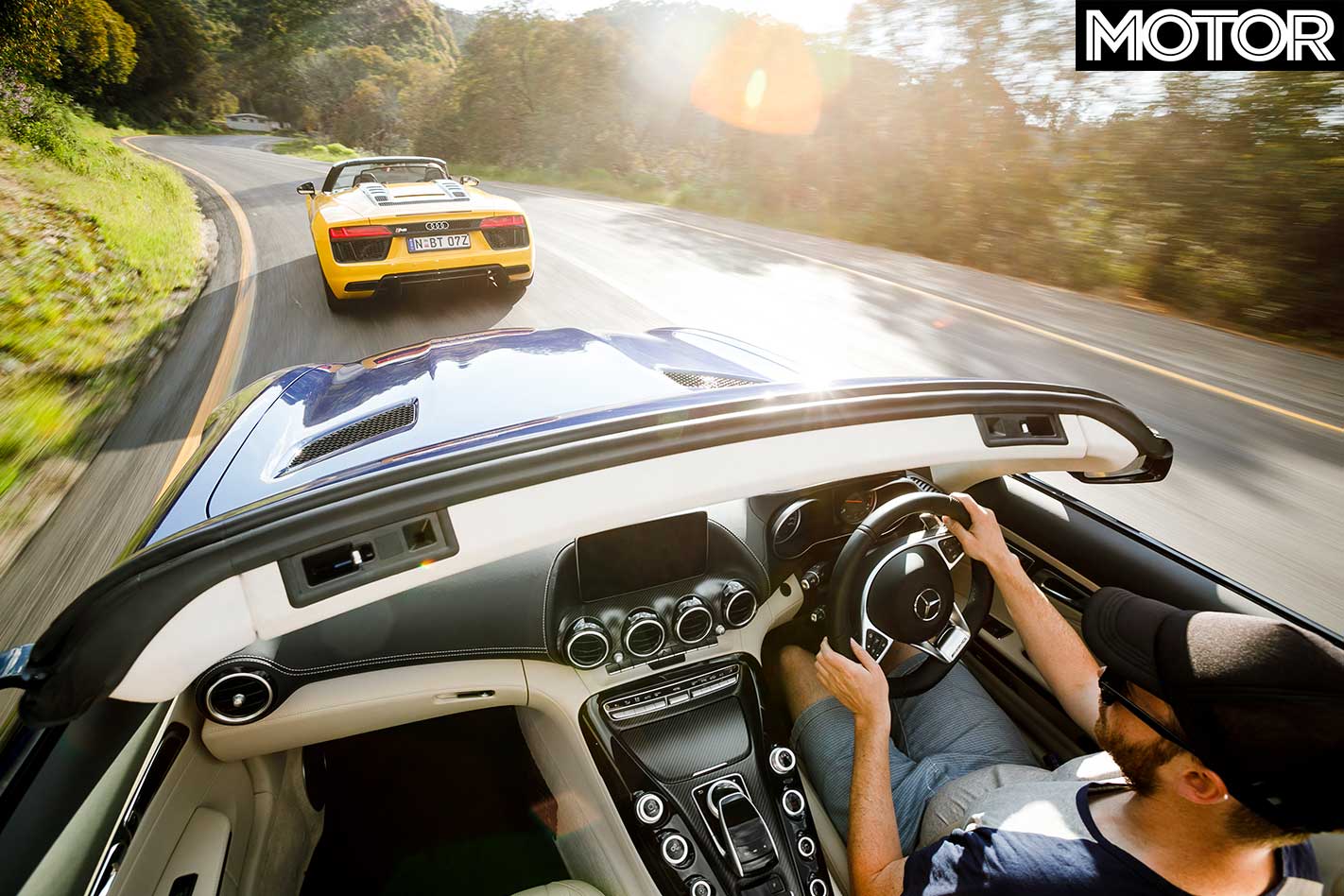
Maximum torque of 540Nm at 6500rpm suggests a peaky power curve, but despite having to haul a lardy 1720kg – 80kg more than the R8 Coupe and 125kg more than the AMG – the atmo V10 never feels short of urge.
Back-to-back with the more powerful Plus you may miss the extra 53kW of top-end fireworks, but in isolation the Spyder feels outrageously quick, as you’d expect from a car with a claimed 0-100km/h time of 3.6sec. Perhaps its greatest trick, however, is when you’re cruising through a series of bends, using a fraction of the engine’s potential, only to glance down and realise you’re traveling at an alarming velocity.
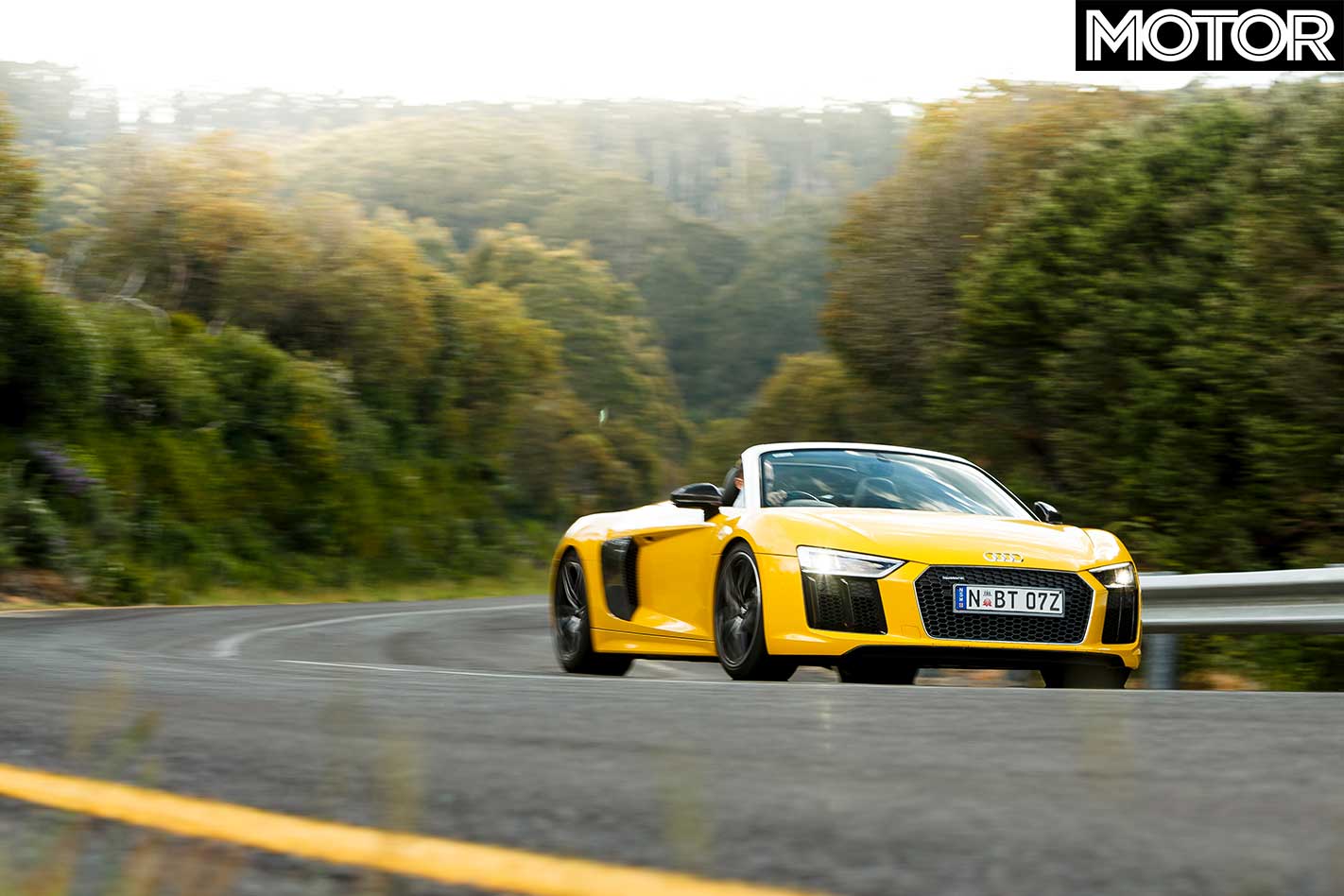
The key to having fun in the Audi is to drive through the understeer and have faith in the all-wheel drive system. Do so and the R8 shuffles torque to the rear, allowing it to exit corners with the oversteer angle determined by the driver’s right foot.
ESP Sport is happy to allow such shenanigans, though the R8 is friendly enough that the electronic guardian angel isn’t a necessity. With this door unlocked the Audi becomes awesomely enjoyable, the driver able to constantly shift the balance between front and rear slip.
It’s perhaps not the most shocking verdict that the $100K-dearer supercar is the pick of the two on a challenging road, though just how good the R8 drop-top is comes as a surprise. In answer to our original question, though, what both prove is that deleting the roof needn’t come at the expense of driving enjoyment.
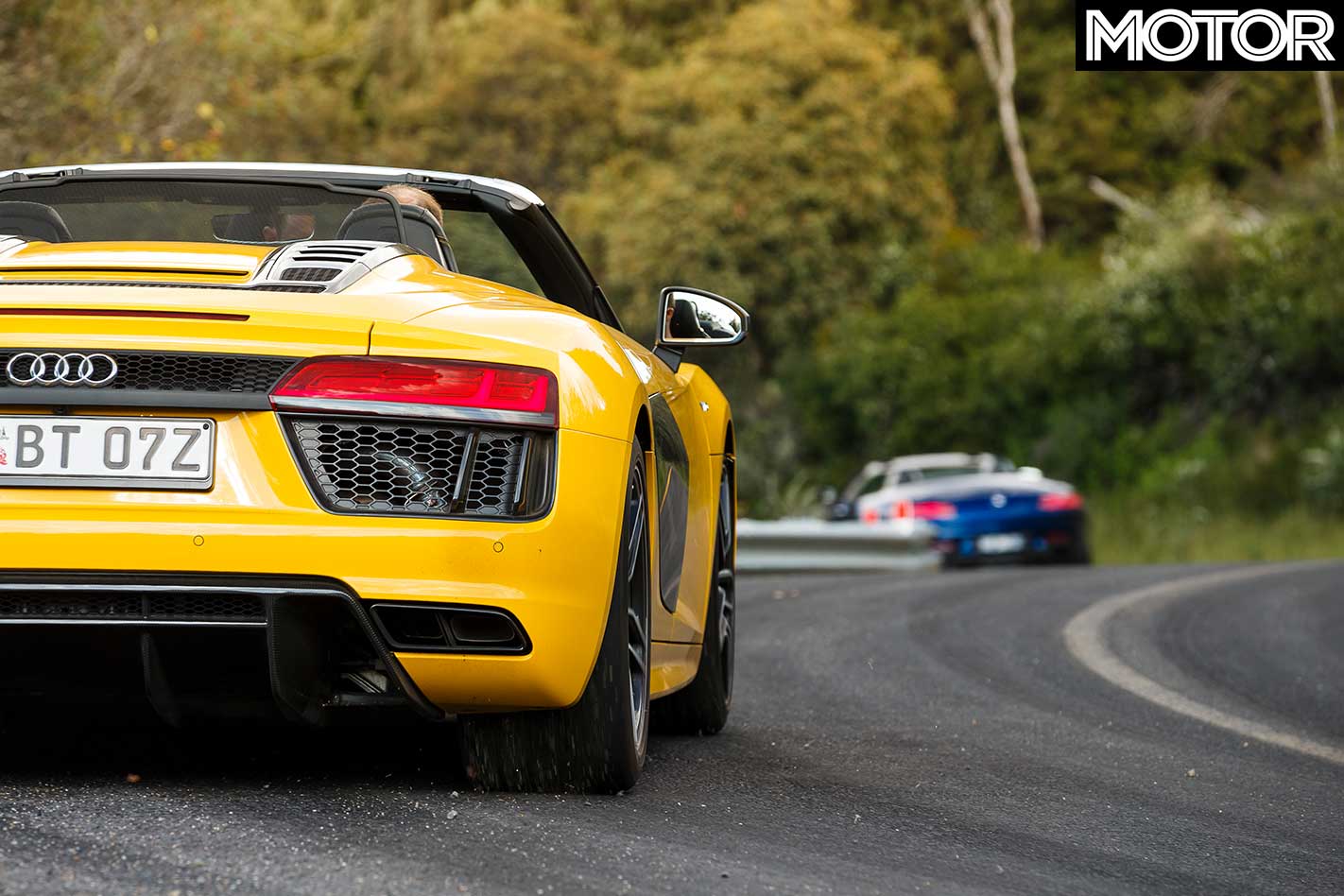
That said, the base Roadster isn’t the convertible AMG GT we’d buy. The price jump to the $338,711 GT C Roadster is significant, but the adaptive dampers, all-wheel steering, wider tracks and revised suspension settings are likely to make it money well spent, not to mention the extra 60kW/50Nm from the uprated twin-turbo V8. Just make sure it’s in this colour combo.
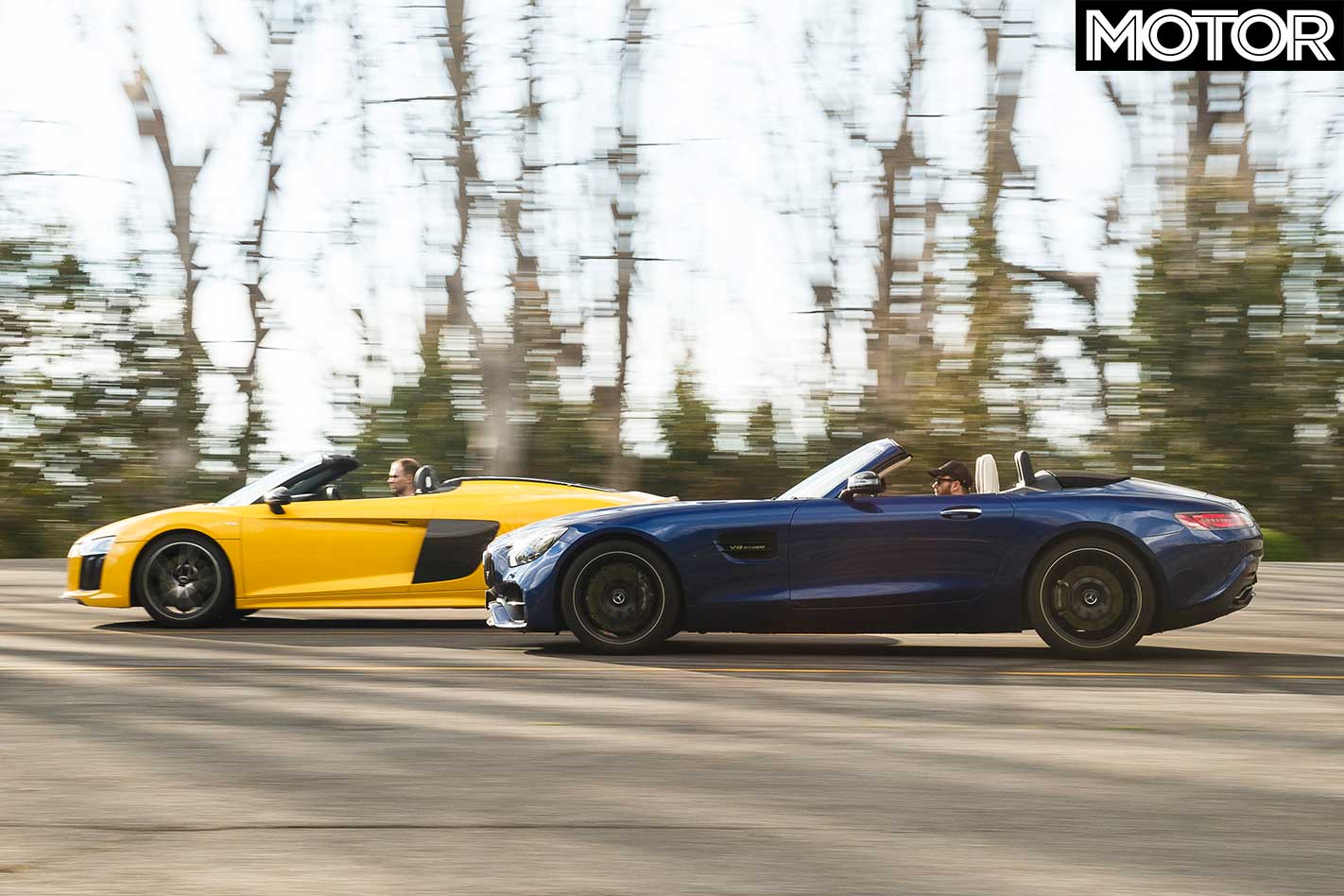
It rights virtually all the Coupe’s ills by being more comfortable when driven slowly, yet more adjustable on the ragged edge. The interior could use a little more pizzazz given the $400K price tag, but with one idle-to-redline blast of that V10 you won’t care how sunburnt you are.
Consider your Order
Audi R8 V10 Spyder
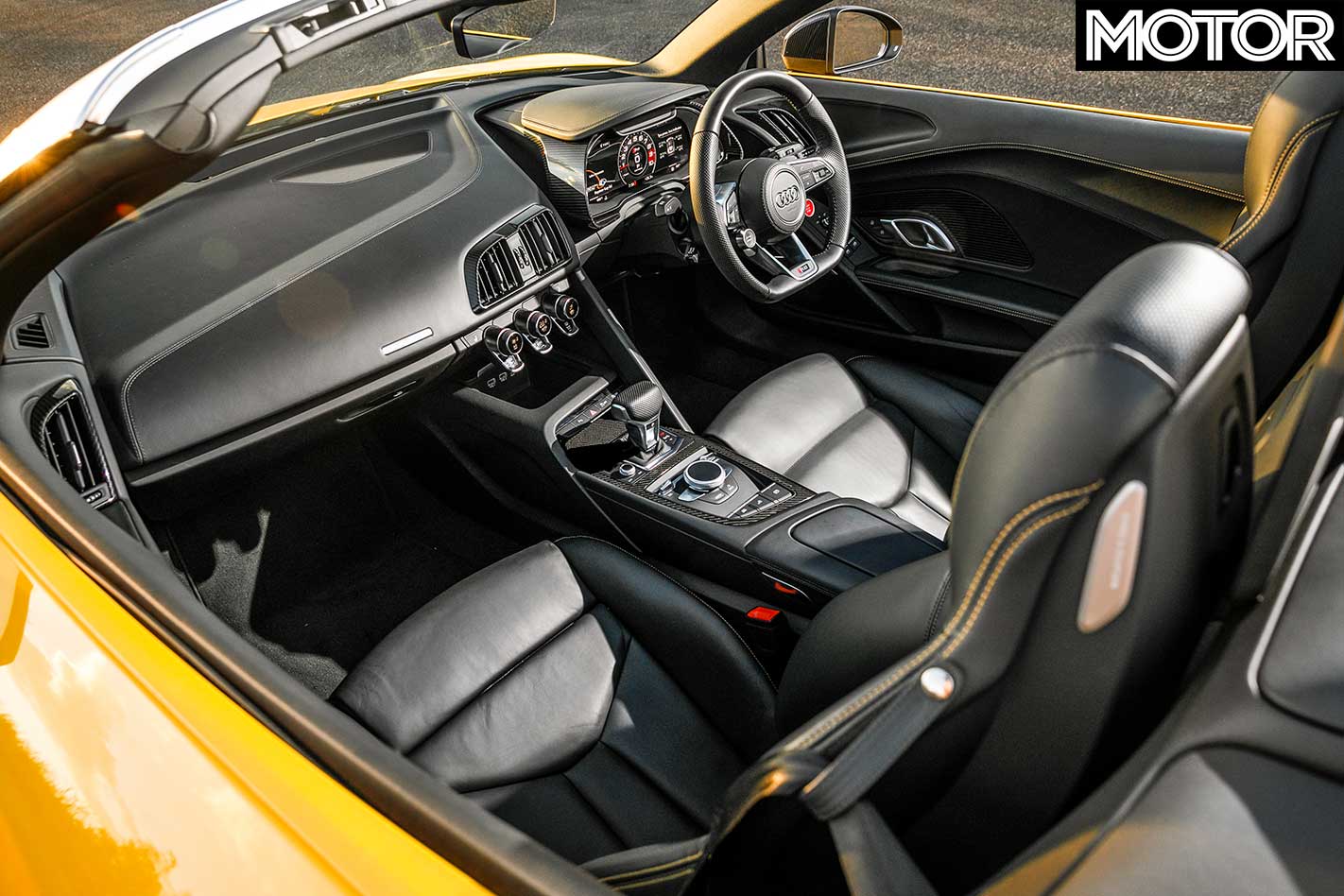
2 – R8 V10 Plus Spyder isn’t available in Oz, but don’t be disappointed, as this base car feels every bit as special.
3 – Interior can be jazzed up with diamond-quilted leather and different colours to lift the mood.
4 – There’s plenty of scope for customisation with 10 colours, six wheel choices and different side-blade material.
5 – If the Audi R8 Spyder’s a little demure, the mechanically similar Lamborghini Huracan Spyder is worth a look.
Mercedes-AMG GT Roadster
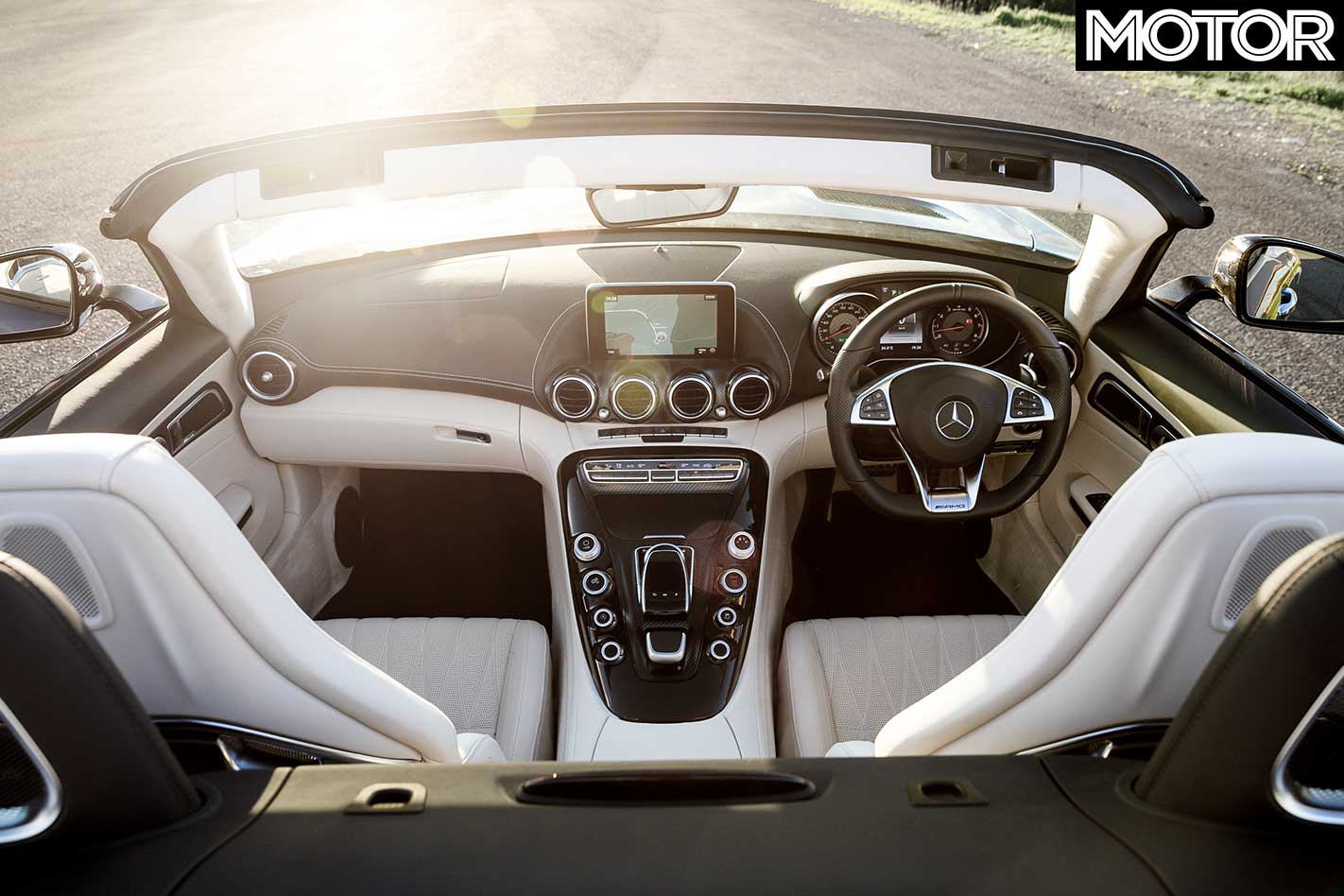
2 – Drive a GT C – it’s $50K more expensive but gets plenty of extra mechanical bits to justify the expense.
3 – Choose your options wisely: beige Nappa leather is good ($9900), but AMG performance seats are very hard.
4 – Externally, the staggered wheels (19s front, 20s rear) really help the GT’s stance –$4000 well spent.
5 – Like the recipe but have kids? Check out the C63 S Cabriolet. It’s not as sharp but even more powerful.
Fast Facts
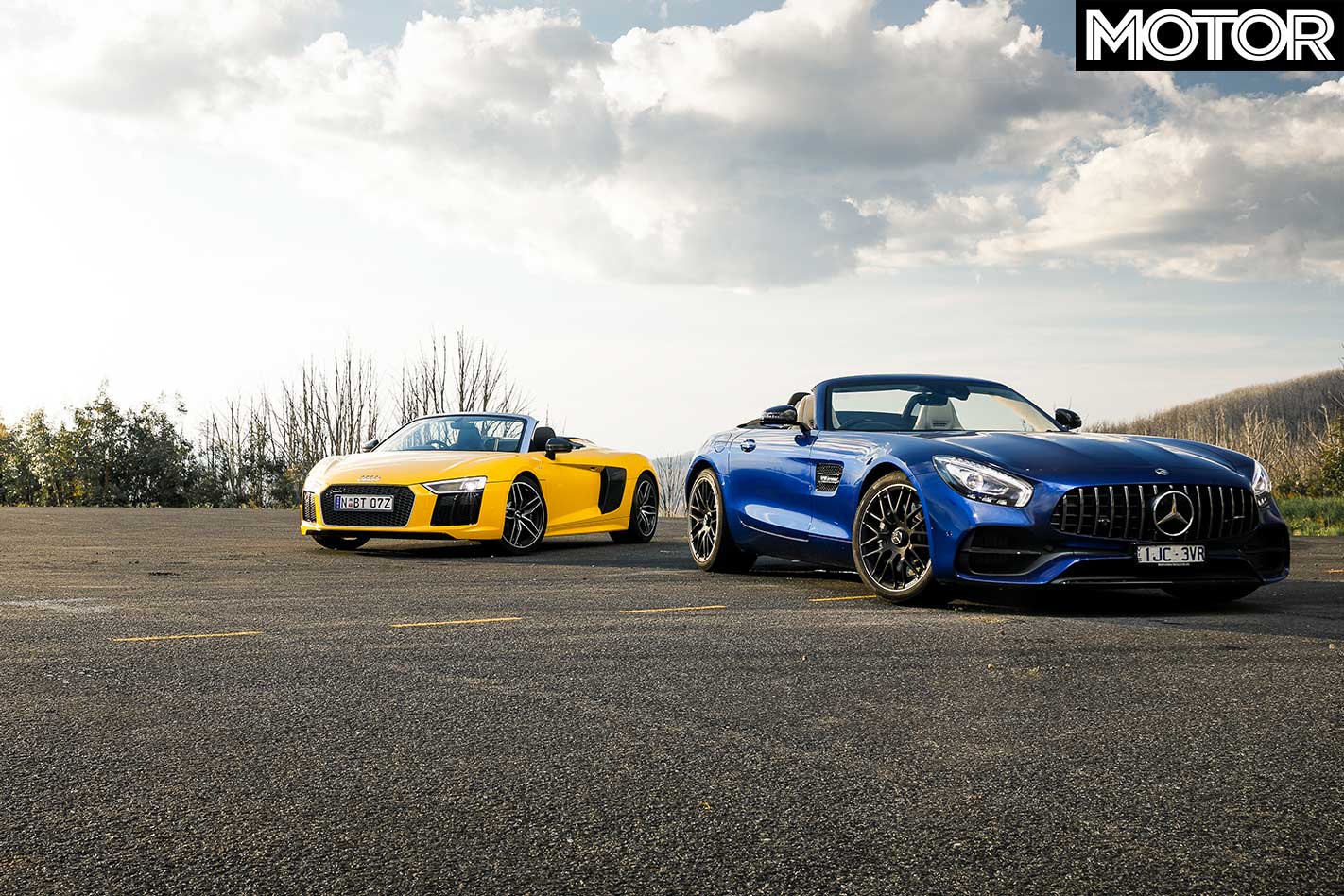
| u00a0 | 2018u00a0Audi R8 V10 Spyder | 2018 Mercedes-AMG GT Roadster |
| BODY | 2-door, 2-seat convertible | 2-door, 2-seat convertible |
| DRIVE | all-wheel | rear-wheel |
| ENGINE | 5204cc V10, DOHC, 40v | 3982cc V8, DOHC, 32v, twin-turbo |
| COMPRESSION | 12.5:1 | 10.5:1 |
| POWER | 397kW @ 7800rpm | 350kW @ 6000rpm |
| TORQUE | 540Nm @ 6500rpm | 630Nm @ 1700-5000rpm |
| WEIGHT | 1720kg | 1595kg |
| POWER/WEIGHT | 231kW/tonne | 219kW/tonne |
| TRANSMISSION | 7-speed dual-clutch | 7-speed dual-clutch |
| SUSPENSION | double-wishbone, adaptive dampers, anti-roll bar (f/r) | double-wishbone, coil springs, anti-roll bar (f/r) |
| L/W/H | 4426/1940/1244mm | 4544/1939/1259mm |
| WHEELBASE | 2650mm | 2630mm |
| TRACKS | 1638/1599mm (f/r) | 1684/1599mm (f/r) |
| STEERING | electrically-assisted rack-and-pinion | electrically-assisted rack-and-pinion |
| BRAKES (f) | 365mm ventilated/drilled discs, 8-piston calipers | 360mm vented/drilled discs, 6-piston calipers |
| BRAKES (r) | 356mm ventilated/drilled discs, 4-piston calipers | 360mm vented/drilled discs, 4-piston calipers |
| WHEELS | 19.0 x 8.5-inch (f); 19 x 11.0-inch (r) | 19.0 x 9.0-inch (f); 20 x 11.0-inch (r) |
| TYRES | Continental SportContact 6; 245/35 ZR19 (f); 295/35 ZR19 (r) | Continental ContiSportContact 5P; 255/35 ZR19 (f); 295/30 ZR20 (r)u00a0 |
| PRICE | $388,500 ($430,211 as-tested) | $283,711 ($314,361 as-tested) |
| PROS | Incredible drivetrain; playful handling | Thunderous engine; great looks |
| CONS | Sombre interior; heavy | Compromised chassis; ergonomics |
| RATING | 4.5 out of 5 stars | 3.5 out of 5 stars |


